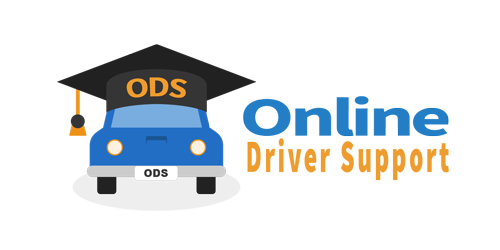14. Use of Mirrors
The Driving and Vehicle Standards Agency believes so strongly in effective mirror use as you are driving, they have devoted a whole chapter to this subject in the Driving the essential skills book. There is no doubt that you should always be aware fully of what is to the rear and sides of your vehicle.
However, mirrors must be checked for the POSITION, SPEED and INTENTIONS of following traffic at specific times, as well as regularly as part of your general driving.
- Mirrors
(Signalling) - Mirrors
(Changing Direction) - Mirrors
(Overtaking) - Mirrors
(Slowing Down/Stopping) - Mirrors
(Merging)
Mirrors (Signalling)
Checking mirrors forms part of the Mirror-Signal-Manoeuvre (M-S-M) routine. It is vital to check the rear-view (interior) mirror and relevant door (exterior) mirrors before considering an indicator or arm signal. As use of brake lights is also a signal to following traffic that you are slowing down, the rear- view mirror (at least) must be checked before braking.
Consider the possible implications of not checking mirrors before signalling. For instance, you intend to turn right into a minor road; you signal right without checking your mirrors. At the same moment a vehicle is in the process of overtaking you. The minimum effect of your incorrect actions (and your poor application of the M-S-M routine) would be indecision and hesitancy from the overtaking driver.
ALWAYS check your mirrors well before signalling.
Mirrors (Changing Direction)
Changing direction includes changing road position (no matter how small) to left or right. It does not necessarily mean moving a considerable distance (i.e. passing a parked vehicle or changing to another lane); the smallest movement (i.e. to avoid a pothole) should be preceded by a check of the rear-view and relevant door mirrors to see what effect your change of direction may have on following or overtaking road users. Avoid excessive shoulder checks on the move. Only turn your head NOT your shoulders.
Mirrors (Overtaking)
It is important to keep up-to-date with the actions of following drivers prior to overtaking moving vehicles. A check of the interior and offside door mirrors is essential immediately before accelerating to move past the vehicle to be overtaken. It is essential to check the interior and nearside door mirrors before returning to your normal driving line to check you have safely cleared the overtaken vehicle.
Mirrors (Slowing Down/Stopping)
The rear-view mirror should be checked prior to releasing the accelerator and braking. This action will allow you to judge how close a vehicle is to yours and may affect the amount of braking you can [safely carry out (particularly if the following vehicle is very close behind you). You may have to activate your brake lights and spread the braking over a longer distance, regularly monitoring the vehicle behind.
Mirrors (Merging)
(eg. joining a motorway from a slip road/acceleration lane) Use mirrors, especially the right door mirror, well before merging. Avoid excessive shoulder checks. Sideways glances are sufficient; do not turn shoulders to look behind.
